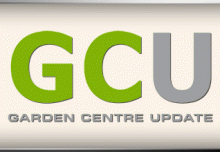 In the third of a series of articles advising garden centre managers how they can help themselves to improve their own publicity, gardening PR specialist Graham Paskett looks at the ubiquitous press release.
In the third of a series of articles advising garden centre managers how they can help themselves to improve their own publicity, gardening PR specialist Graham Paskett looks at the ubiquitous press release.
Even in this electronic age the press release is the sheet anchor for communicating with the media and there is a lot you can do to help make yours the one used by journalists.
In an earlier article we have looked at general tips and the importance of good timing. Now we shall look at the pitfalls of the press release.
Before joining our business ten years ago my wife, Jennie, edited our local weekly newspaper in a small Staffordshire market town. During one single week she collected together ALL of the press releases that she received – more than 150.
Your local newspaper is a key target so you can imagine the competition you are up against. Don’t think for one minute that plastering the front of your press releases with NEWS – URGENT and the like will make any difference – what you need to do is follow a few simple rules.
The first and most important is: are you writing about news or trying to get a free advertisement in the newspaper?
Are you writing about something new, an event that’s taking place, a new appointment or simply banging on about your latest BOGOF? Don’t bother with the latter.
The following checklist will help you achieve the desired column centimetres.
- Put the date you sent out the release on the top.
- Summarise the activity in a headline of no more than eight or ten words.
- The introductory paragraph is key to success. The busy journalist speed reading through 150+ press releases hasn’t got time to work through an essay. Keep the intro brief – maximum of 25 words. Use it to give an outline to the story – no need to give all the facts and figures here.
- In the release be certain you answer the five key questions – who, what, when, where and why?
- When talking about people there is no need to prefix with Mr, Mrs, and Miss. If the person is a doctor or professor use that. Put in first and second names and job titles or positions.
- If you are quoting someone put the actual words in quotation marks at both the beginning and end of the quote. Make it clear who is saying it – John Smith, managing director of Smith’s Garden Centre in your town, said: “etc etc…”
- If it’s an event: give all the dates, times and entry charge – even admission free.
- Type or word process – don’t hand write. Use one and a half line spacing.
- At the end put a contact name and telephone/e-mail address details.
- Try to keep it to one side of A4, one and a half pages maximum.
- Check spelling and punctuation.
- Remember the two great barriers to the press release are lack of space – so keep it short – and try to push advertising as editorial.
Good Luck!




